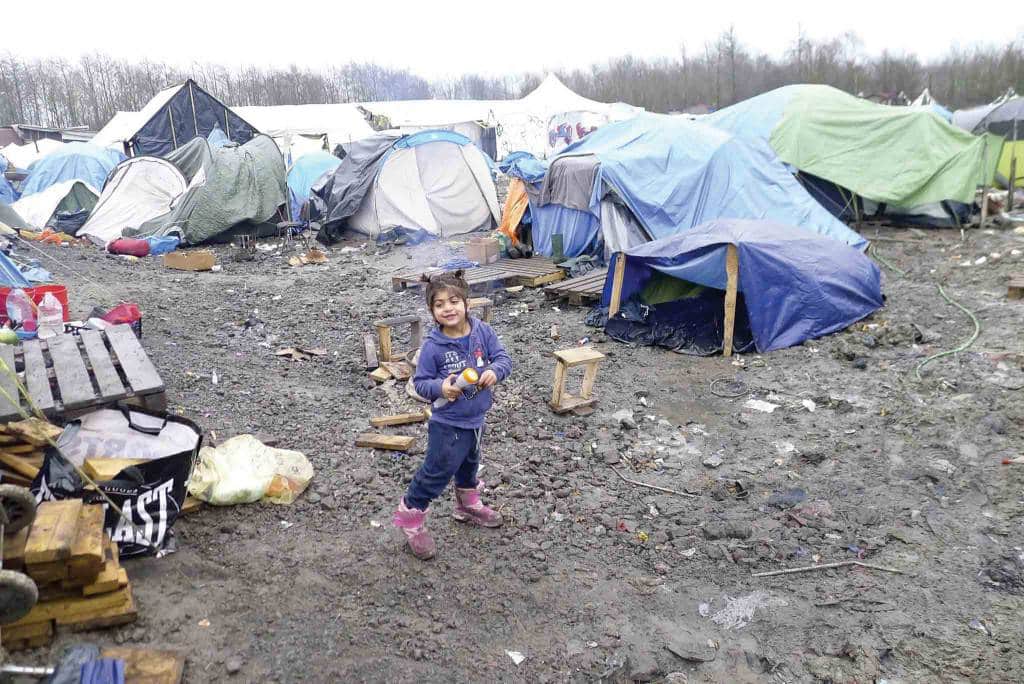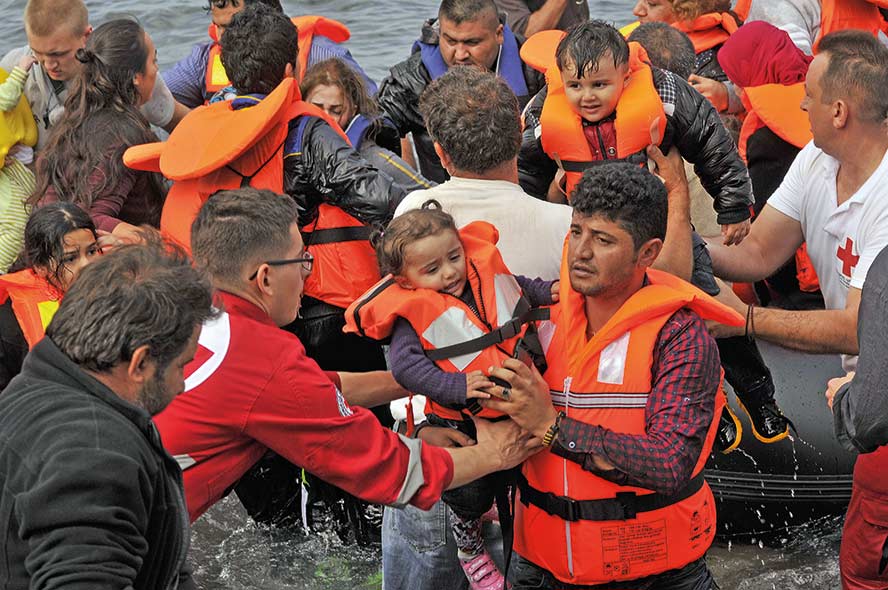The ongoing refugee crisis has left the county council close to ‘breaking point’ as it struggles to cope with the flow of unaccompanied children arriving on the south coast.
The warning comes from the Cabinet Member for Specialist Children’s Services, Cllr Peter Oakford, who represents Tunbridge Wells North on the county council.
He told the Times that currently the council has 1,400 unaccompanied asylum-seeking children (UASC) in its care, that includes 550 aged over 18.
In total, Kent spent £33million looking after the youngsters last year, of which £31million was reimbursed by central government, leaving local taxpayers to foot the £2million bill – a figure forecast to rise by up to 50 per cent this year.
The figure does not include additional costs incurred by the authority in providing such things as healthcare and education.
Many of the young people arrive here with the help of people smugglers. Once ashore, or rescued from a boat, the county council is obliged to take them into its care.
Most are aged 15 or over and can apply for asylum when they reach the age of 18.
If it’s granted their family members are entitled to come and live in the UK.
Kent is currently responsible for one quarter of all unaccompanied child asylum seekers in the UK, a situation the council believes is unsustainable, and which Cllr Oakford is lobbying central government to rectify.
“I have been campaigning for 18 months to get the Government to trigger a mandatory dispersal programme, but thus far they have been very reluctant to do so.”
Despite legislation on mandatory relocation of UASC, the Government has instead been relying on voluntary relocation, an approach Cllr Oakford thinks has failed as the county is still seeing a net growth in UASC.
Kent demands mandatory relocation
“We are seeing unprecedented pressure on schools, the health system and even the police,” Cllr Oakford said, adding the police are often required to find children who go missing from the system. Those children that do go missing are often at the mercy of criminal gangs, he said.
“As a number of the young people have been smuggled in, they have been told by the smugglers to make contact with them upon arrival. If they don’t, they threaten their families back home.
“About 70 per cent of them are aged 15 or over. By law we have to treat them like we would any other child in our services, so they go out and hang around in town or play football like most people their age. But this can make them vulnerable.”
Tunbridge Wells is currently home to 48 UASC, while Tonbridge accommodates 15. The number each district can take into care is determined by the resources available.
London councils put their children into care in Kent
Kent has effectively run out of foster carers to look after the 850 refugee children still under 18. The lack of carers means the council is forced to look further afield to accommodate the children.
“Kent is at breaking point to the degree that we have had to place 248 children outside of the county but we are still having to support them,” explained Cllr Peter Oakford.
The council is currently looking after children as far away as South Gloucestershire and Portsmouth. This adds to the burden on support staff travelling to look after them, resulting in the children themselves getting less help. The situation is compounded by an additional 1,300 children in care placed in Kent by other local authorities.
“Many London authorities find it too expensive to look after the children in their care within the capital, so look to Kent where it is cheaper, even though guidance suggests children should be no further than 20 miles from their homes. They use the county’s independent foster agencies, and although they pay for the direct costs we have to find the resources to accommodate them within the wider community. So effectively we are being forced to house some children outside of the county while accommodating others from London. It is unsustainable.”

Youngsters taught life skills and cultural differences
Although Syria makes the headlines, the main epicentres of unaccompanied refugee children (UASC) are countries in or around the Horn of Africa – particularly Eritrea – alongside Afghanistan.
Children from Iran, Iraq, Albania and Algeria, along with Syria, make up much of the rest. The cultural differences between the UK and these countries mean extra care has to be taken assimilating the males, he added.
Those males between 16 and 18, unlike females, do not go straight into care, but instead spend around six to eight weeks in specialist centres where they can be assessed.
Part of this is to ensure they genuinely are the age they claim, but also to check their mental health, asses their grasp of English and, importantly, educate them in the customs of the country.
“We teach them English and life skills but also about our culture. Many of them have a different view of females, and their place in society, from what we would consider the norm,” Cllr Oakford said.
Need for refugees to blend in more with the local community
Having around a quarter of all the UK’s unaccompanied refugee children concentrated in Kent can also lead to friction within the communities in which they are based.
“We have mixed reactions from people, with certain areas welcoming and others more hostile,” said Cllr Peter Oakford.
“There have been some rather unpleasant experiences with the young people being made not to feel very welcome at all.
“If there was mandatory dispersal, we would have, say, ten UASC per area, meaning they would blend in more. Instead, we have 50 in each area.”
Cllr Oakford said their natural reaction is to group together, but this leads to community tension, although he has great sympathy for why they choose to do so.
“If you were one of just ten English people in the Sudan and did not know the language and customs, you would naturally stick with the other English.”
There has been some relief as the number of new arrivals has fallen dramatically over the summer, thanks to tighter security around the channel. Last year, 200 UASC arrived in July. This year it was around 60, which Cllr Oakford said was ‘extremely fortunate’.
“If arrivals had not fallen we would have been in big trouble,” he admits.
Other overstretched services are in need of money
Cllr Peter Oakford also warned: “We have lost £600million from our budget in the last five years due to central government cuts, and now on top of that we have to pay this additional money [£3million this year] to care for these children. This is money we could be spending on school, roads or whatever other overstretched services badly need it.”
Alison O’Sullivan, President of the Association of Directors of Children’s Services, said any system put in place to disperse child refugees should acknowledge local capacity and expertise, but making it compulsory is not the answer.
“We need a system that shares the responsibility in a fair way, but is also capable of being flexible enough to take into account particular local circumstances. Councils with experience of working with refugees may be better equipped, so it’s not a one-size-fits-all situation.”








